News & Blogs
Red king crab, snow crab, and hair crab are the Japanese favorites.
Crab sticks don’t contain crab meat but fish paste.
TREHA® has a proven record of maintaining the quality of fish paste products.
In this blog, we touch on diverse topics about Japanese food cultures, practices together with the culinary secret, TREHA®, and its important role in the Japanese food industry. We hope our blog helps you obtain in-depth knowledge of the secrets and science behind Japanese cuisine, shared from our kitchen, to yours.
The nation’s favorite crustaceans: Red king crabs, snow crabs, and hair crabs.
Crabs are widely consumed and loved in many countries, and Japan is no exception. There are about 4,400 crab species in the world, of which more than 1,000 species live in the seas around Japan, including some poisonous and not suitable for eating. The Japanese's most popular and commonly consumed species are red king crab, snow crab, and hairy crab, which have a prime season in winter.
Let’s take a close look at how these three species are consumed in Japan.
Red king crabs:
As its name suggests, red king crabs also reign as the "king of crabs" in Japan. Biologically, the crab is a member of the hermit crab family.
While the king crabs served on Japanese dining tables are mostly imported from Russia, Canada, and the US (Alaska), crabs are also caught in Japanese waters but can be pricey because of the scarcity.
The crab landing season in Japan comes twice a year. The first season ranges from April to June. After ice floes are gone, crabs begin to rise from the deep ocean bottom after sufficiently feeding themselves for reproduction. Thus, crab meat in this season is rich in nutrients and tastes sweet.
The second season starts in November and ends in February when crabs develop their meat firmly packed after molting multiple times between January and February.
Because the principle of Japanese cuisine is to bring out the best and most out of seasonal ingredients, simple cooking methods are highly valued, which applies to making crab dishes. As red king features heartier meat than most crabs, the Japanese eat them wildly, enjoying the volume. Gilled king crabs are often consumed without much flavoring except for a bit of lemon or soy sauce or with ponzu (Japanese condiment made of soy sauce and citrus juice) to take advantage of the savory umami fully. Boiled/steamed king crabs exhibit their best feature of meatiness and robust umami enhanced by the simple cooking method.
Chef Meguro, an authentic Edomae sushi master in Tokyo, uses TREHA® to boil red king crabs. Click here for his interview.
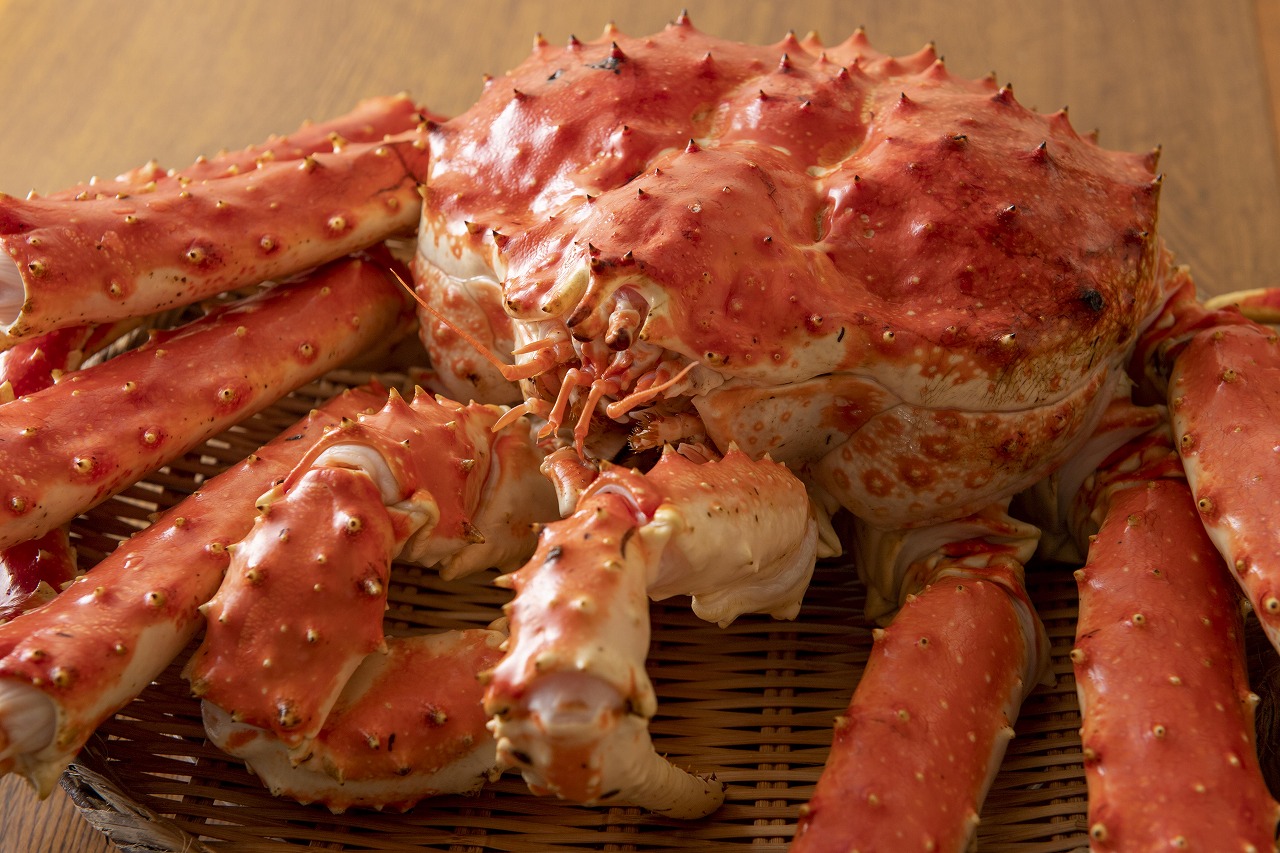
Snow crabs:
Snow crabs live in the Sea of Japan, the Sea of Okhotsk, the east coast of Russia, the Bering Sea, and off the coast of Canada. The two largest snow crab landings in Japan are in Hyogo and Tottori prefectures, located alongside the Sea of Japan. These two landings alone account for nearly half of the total Japanese catch. For conservation reasons, the prime season of snow crabs caught in the Sea of Japan is set separately by their sex. Males are caught from November to March, whereas females are caught from November to December. When the fishing ban is lifted every year, the Japanese are reminded of the arrival of the winter. Snow crab is also known by many other regional naming used as brand names to promote the local business.
Snow crab can be served fresh (as sashimi), grilled, boiled in a hot pot (鍋 nabe), deep-fried as tempura (天ぷら), or cooked with rice. In particular, snow crab shabu-shabu tastes out of the world, showcasing its distinct plump texture that melts in your mouth with a subtle sweetness. Prepare a pot full of Dashi soup stock from kombu (kelp), add your favorite companion food items such as napa cabbage, tofu, mushrooms, and green onions to the simmering pot. Gently swish the crabmeat for about 5 to 10 seconds and enjoy with ponzu as you like.
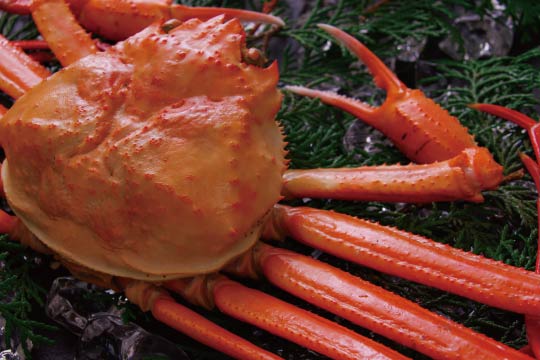
Hairy crabs:
As the name suggests, a hairy crab features short bristles besides a stocky body and meaty legs. Hairy crabs are landed throughout the year, of which landing season varies by region. This allows us to enjoy the best hairy crabs sourced from the landings in season anytime. In wintertime, two landings in the Hidaka region of Hokkaido and Iwate prefecture are known to have the prime season for hairy crabs.
Hairy crabs, smaller than other crabs, are best boiled or steamed as a whole. The additional charm of hair crabs is their sweet and rich crab tomalley. Enjoy the freshly prepared crabs dipped in the tomalley.
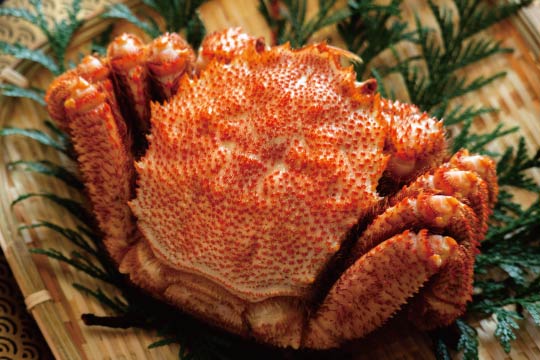
Although crab sticks taste and shape like real crab, they are made from fish paste.
Have you ever tried crab sticks? They are also called imitation crab, seafood sticks, or Surimi. Crab sticks are called "Kani kamaboko (かにかまぼこ)" in Japanese. Kani is the Japanese word for crab, while kamaboko (fish sausage) refers to a steamed fish cake seasoned, texturized with starch, molded like a pillow on a piece of wood.
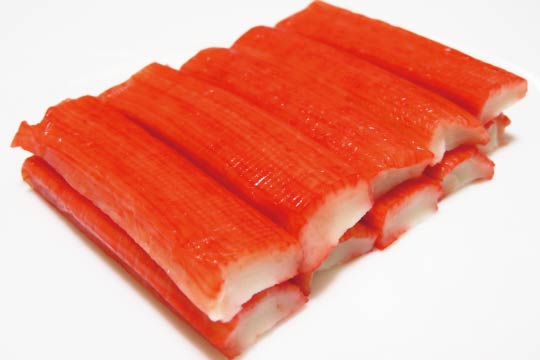
The crab sticks are kamaboko fish cakes resembling the crab meat in flavor, texture, shape, and color. It is also called "kani-kama" in Japanese for short. Even though it tastes like crabs, the main ingredient is Pollack without including any crab meat in most cases. The stringy, crab-meat-like texture is produced by rolling up a shredded sheet of fish paste into a log. Among various theories, the most trustworthy view is that a Japanese company invented crab sticks in the 1970s.
Fresh crabs are high in demand but can be very expensive in Japan. On the other hand, crab sticks are the budget-friendly alternative for crab leg meat because they taste, feel, and look just like the real thing. In addition, crab sticks can be served quickly and used in many dishes, making them a widely popular choice for professional and home chefs in Japan.
Surprisingly the world's largest consumers of crab sticks don’t live in Japan, which invented the food, but in France, followed by Spain. In addition, Japan is not the world's largest producer either, but Lithuania, which catches a large amount of Pollock.
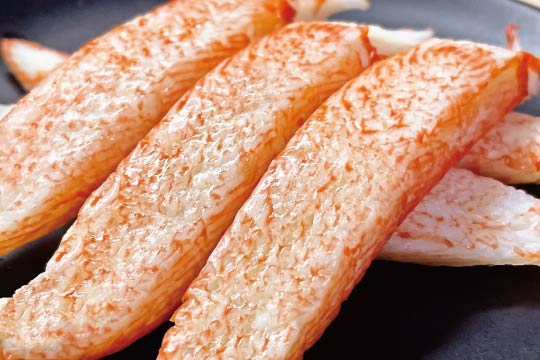
Benefits of TREHA® for fish paste products.
Fish has been a Japanese primary protein source since old times. In addition to Kamaboko fish cakes, various paste products are prepared by steaming, baking, or deep-frying fish paste. TREHA® is remarkably beneficial for fish paste products.
Kamaboko (蒲鉾):
Kamaboko is a traditional steamed fish cake that comes in a pair of pink and white colors, symbolizing a lucky color combination of red and white (kohaku.) Kamaboko is often served in the New Year dish (Osechi ryoriおせち料理).
TREHA® improves shape retention while maintaining a chewy and elastic texture. In addition, TREHA® inhibits water release after freeze-thaw.
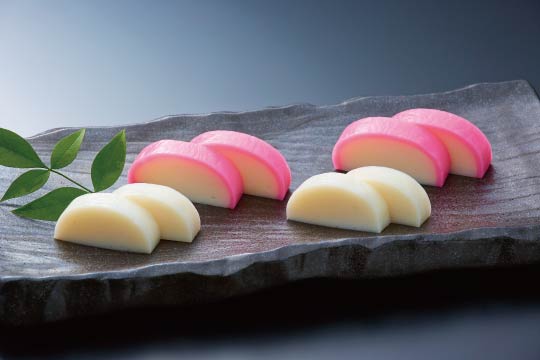
Shape stability in kamaboko
Each kamaboko sample was prepared using TREHA® or sugar at 5% of fish paste, molded on wooden boards, and steamed at 105℉/40℃ for 30 minutes. The cross-sectioned surfaces were compared to observe deformation after cooking.
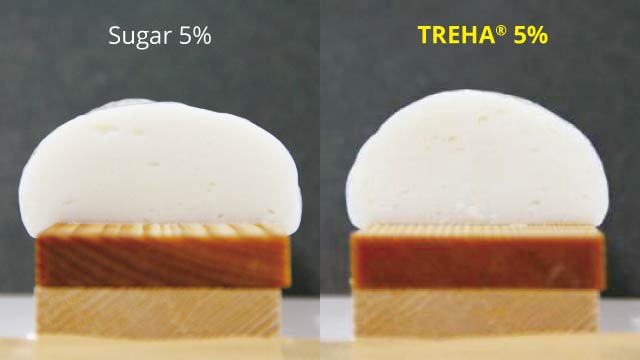
Chikuwa (竹輪):
In Japanese, chikuwa (竹輪) means “bamboo ring” because it resembles a bamboo stem when they are diagonally sliced and stood.
TREHA® improves the quality of chikuwa by maintaining the fresh texture during cold or frozen storage.
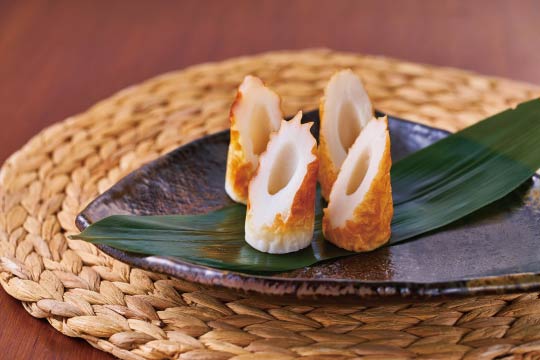
Micrographs of chikuwa after frozen storage
Each chikuwa sample was prepared using TREHA® or sugar (5% of fish paste) and stored frozen at -5℉/-20℃ for 2 months. The cross-sections surfaces were compared under a microscope.
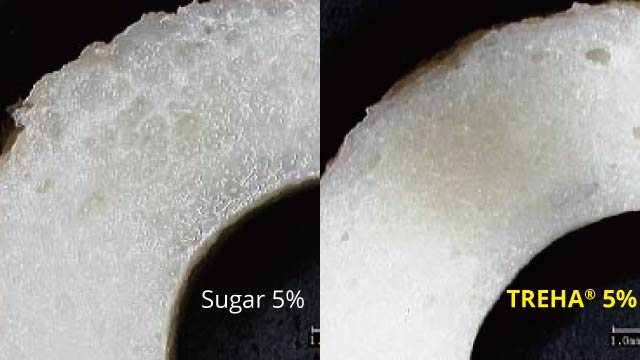
Texture change in chikuwa under refrigeration
Samples were prepared using 5% TREHA® or with 5% sugar. Their hardness was measured using a texture analyzer with a spherical plunger 5mm in diameter at 40℉/5℃.
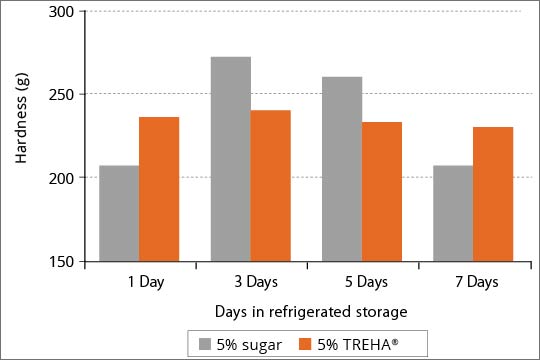
Fried Fish Cake (揚げ蒲鉾 Age-kamaboko):
TREHA® maintains a soft texture during cold or frozen storage while maintaining the fresh taste.
Hardness in cold storage
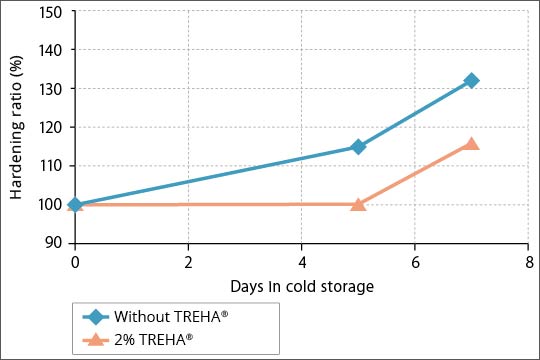
Hardness in frozen storage
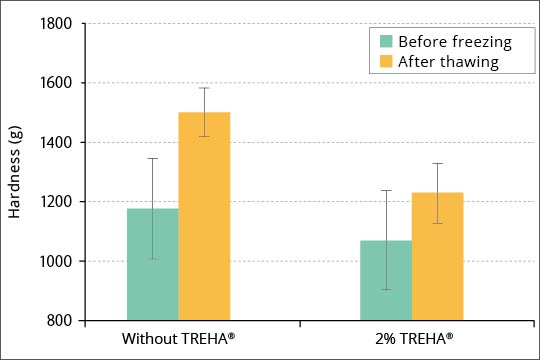
What kind of dishes do you want to make using crab meat, crab sticks, and fish paste products?
Did you find this blog interesting?
Please share it with your friends in the food service industry.
We regularly update the blog about the food culture of Japan, where TREHA® was discovered for culinary applications.
Click here and send us a message to subscribe.
Or hit us up on Instagram @trehalose_sensei!
You might also be interested in:
Japanese seasonal delicacies Part 4: Satsuma oranges (みかん mikan)
Japanese seasonal delicacies Part 6: Sansai (山菜) mountain vegetables

